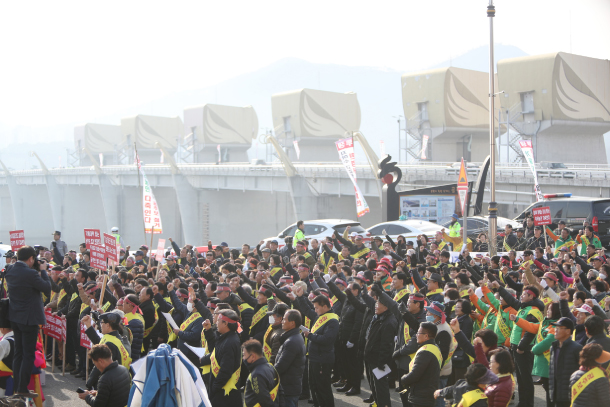Political rapids
Published: 01 Mar. 2019, 18:12

The author is an editorial writer at the JoongAng Ilbo.
K-Water, the state entity responsible for overseeing water supplies, coolly took the recommendation of a panel from the Environment Ministry to remove weirs along the rivers of Geum and Yeonsang because of their negative impact on the waters and surrounding ecosystems. “It’s all a political game,” one official from the public corporation said in an ironic tone. Nobody from K-Water was invited onto the panel assigned to probe the environmental impact of the costly renovation work done on the four rivers by the conservative administration of President Lee Myung-bak. It should have been angry to be excluded from such a major project under its jurisdiction. In fact, K-Water was happy to avoid further political trouble. The corporation had to take all the blame for any faults found with the four rivers restoration project, whose governing office changed from the Land Ministry to Environment Ministry under the Moon Jae-in administration.
The four rivers restoration project was a baffling issue. It lost its direction and ended up mixing economic, environmental and engineering issues with political interests. Voices from the political realm ended up outshouting the empirical findings of experts. The results of the probe led by the panel under the Environment Ministry were no different. The idealistic view of letting rivers flow naturally clashes with arguments about damage to national interests. The committee recommends removal of the weirs for “economic” reasons. The rival front cannot accept its conclusion, saying it stemmed from subjective guidelines and neglected their service as tourism attractions, let alone the danger of weakening the protection against flood and drought when the weirs come down.
The evaluation of water quality is mixed. What has been left out and included is a source of eternal debate. There are reports that water quality has improved after the lines along the rivers were renovated. According to one international journal, lab tests on the lower mouth of the Geum River found a reduction in the biochemical (BOD) and chemical oxygen demand (COD) as well as total phosphorus (TP) in 2013 against the levels in 2009 before the weirs were installed.
Environmentalists usually point to the green tide forming in rivers during summers to raise alarm about environmental harm. Although algal blooms are an undeniably gross sight, their harm is still debatable. The water authority argues that because the water mouths are protected with multiple filters, they do not cause a danger to drinking water. Some experts also claim that water levels, temperature and other pollutants make bigger causes for algal blooms to form rather than water velocity.

About 500 residents of Gongju hold a rally near the Gongju Weir on the Geum River in South Chungcheong, on Tuesday denouncing a joint government committee’s recent proposal to dismantle the controversial weir. [YONHAP]
The precedent of Isar may not work on Korean rivers. Korea has torrential rain during summers and the waters generally flow slowly. Rain is regular around Isar and the waters flow fast. The authorities also were very careful. The naturalization work took place from 1989, more than a century after the river was canalized. The construction also panned out over 10 years over an 8-kilometer (4.9-mile) area. The four river banks in Korea were refurbished just seven years ago. The real impact of the embankment cannot be known as there has not been serious flooding or drought since. It is too early to jump to conclusions about the economic and environmental effect. There is no rush. We do not want to see pork barrel reruns under a different political climate if the weirs hurriedly come down.
JoongAng Ilbo, March 1, Page 30










with the Korea JoongAng Daily
To write comments, please log in to one of the accounts.
Standards Board Policy (0/250자)